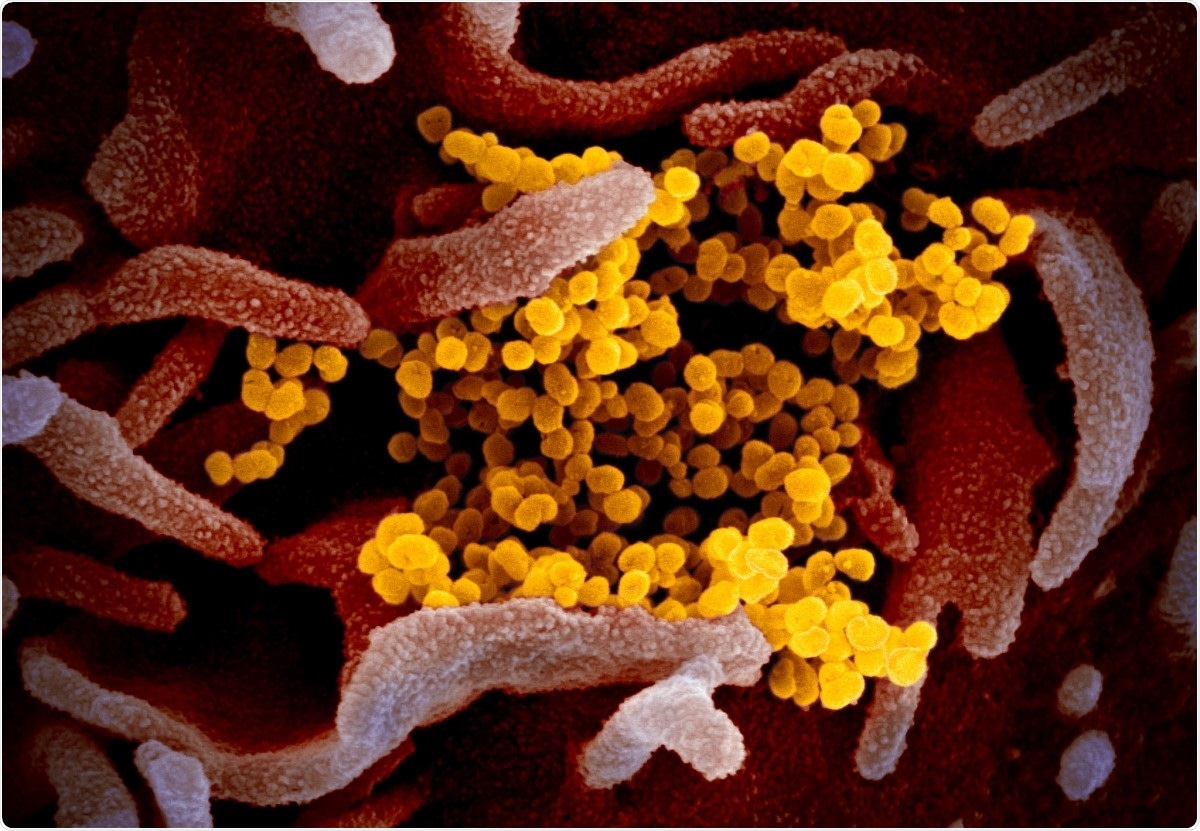In biology, cellular senescence is defined as a permanent arrest of cellular activity. In the 1960s, Leonard Hayflick and Paul Moorhead concluded that normal human fetal fibroblasts that grow in culture can divide 50 times before undergoing senescence.
Cellular senescence can cause inflammation and several chronic diseases, as well as age-related dysfunction. However, its effect on antiviral responses within the body is unknown. Due to the vulnerability of older adults, particularly those with severe acute respiratory syndrome coronavirus 2 (SARS-CoV-2) infections, cellular senescence may have a significant effect on the chronically ill.

A study recently published in the journal Science explores the concept of senescent cells (SnC) having a hyperinflammatory response and the use of a class of small molecules called senolytics to combat this.
The ageing population
The coronavirus disease 2019 (COVID-19) pandemic highlighted the vulnerability of the elderly due to the high mortality observed in this group. A large number of chronic diseases, including cancer, diabetes, heart disease, and others, are strongly linked to old age. Additionally, since senescence is a driving force behind the process of aging and age-related diseases, tackling it as a therapeutic goal may reduce the vulnerability of aging populations.
Senescent cells can be caused by responses to external and internal stress signals regulated by transcription factor cascades, including p16INK4a or p53. Gene expression, histone modification, organelle function, among other matters, may be affected by these cascades, which, in turn, can lead to the cell becoming senescent.
Senescent cells
Senescent cells have the ability to release components, including inflammatory factors, chemokines, and growth factors. The role of senescence lies in being a tumor suppressor mechanism, with senescence-associated secretory phenotype (SASP) factors released by the cells, acting as a chemoattractant in order to raise the immune response and clear these cells.
However, this normal response to senescent cells becomes increasingly difficult with age when there is an accumulation of senescent cells in most tissues. This accumulation occurs due to the ineffective removal of these cells by the immune response and its ability to avoid cell death.
Senescent cell accumulation, which occurs with advancements in age as well as chronic diseases, leads to chronic sterile inflammation. This can further affect and increase the vulnerability elderly patients have with a higher likelihood of disease onset.
Previous studies looking into senescent cells have found that transplanting these cells into young mice caused accelerated aging to occur. However, using genetic or pharmacological approaches to eliminating senescent cells has been found to improve physical function and reduce the risk of disease.
The study utilized irradiation-induced senescent human pre-adipocytes and non-senescent cells in order to determine whether senescent cells have an altered response to pathogen exposure in comparison to healthy normal cells. These cells were treated with pathogen-associated molecular pattern (PAMP) factor lipopolysaccharide (LPS), which resulted in a higher expression of SASP factors released by senescent cells, which suggests that this treatment can increase the inflammatory response.
The effect of SARS-CoV-2 PAMPs on senescent cells
In order to investigate the effect of SARS-CoV-2 PAMPs on senescent cells, the researchers used human kidney endothelial cells treated with pyrogen-free recombinant spike (S1) protein. The exposure of the endothelial senescent cells to this treatment for 24 hours resulted in an increase in SASP factors.
Although inflammatory SASP factors can aid with the elimination and clearance of pathogenic cells, certain inflammatory SASP factors can be seen as being vital and integral for the pathogenic cytokine storm that occurs in some patients infected with SARS-CoV-2. IL-1α, which is one of the inflammatory SASP factors that contribute to this pathogenic cytokine storm in COVID-19 patients, is a natural pyrogen as well as being a key upstream regulator of senescence-associated cytokines. IL-1α has been found to be higher in COVID-19 patients as well as being increased in senescent cells, which were treated with S1, and in mice treated with LPS.
Senolytics
Senolytics include drugs that induce apoptosis (cell death) and was used by the researchers in order to investigate their efficacy in reducing the mortality in old mice affected with pathogens.
Fisetin, a natural flavonoid in fruits and vegetables, was established as a senolytic, and was found to have benefits such as tissue homeostasis, reversing age-related tissue damage, and extending the lifespan of mice with no adverse side effects.
The significance of this research for COVID-19 patients lies within reducing the vulnerability of the aging population who experience the accumulation of senescent cells more readily than the younger populations. This, in turn, affects the probability of the elderly developing more inflammatory diseases. However, with the use of senolytics, it is possible that senescent cells can be targeted for therapeutics, which could impact and reduce the likelihood of senescent cell accumulation in the elderly.
The mortality rates from COVID-19 have been heavily disproportionate, affecting older adults the most. The effect of senescent cells, which can impact the immune response to pathogens such as SARS-CoV-2, could have contributed to a lack of antiviral response by these vulnerable patients. With more research into therapeutic targets for senescent cells, the benefits would be a welcomed addition, especially for 1 out of 20 elderly patients who can still become infected by the virus even with a 95% effectiveness rate of vaccines.
- Camell, C., Yousefzadeh, M., Zhu, Y., Langhi Prata, L., Huggins, M., Pierson, M., Zhang, L., O’Kelly, R., Pirtskhalava, T., Xun, P., Ejima, K., Xue, A., Tripathi, U., Machado Espindola-Netto, J., Giorgadze, N., Atkinson, E., Inman, C., Johnson, K., Cholensky, S., Carlson, T., LeBrasseur, N., Khosla, S., O’Sullivan, M., Allison, D., Jameson, S., Meves, A., Li, M., Prakash, Y., Chiarella, S., Hamilton, S., Tchkonia, T., Niedernhofer, L., Kirkland, J. and Robbins, P., 2021. Senolytics reduce coronavirus-related mortality in old mice. Science, p.eabe4832, https://doi.org/10.1126/science.abe4832, https://science.sciencemag.org/content/early/2021/06/07/science.abe4832.
Posted in: Medical Science News | Medical Research News | Disease/Infection News | Healthcare News
Tags: Adipocytes, Aging, Apoptosis, Cancer, Cell, Cell Death, Chemokines, Chronic, Coronavirus, Coronavirus Disease COVID-19, Cytokine, Cytokines, Diabetes, Drugs, Efficacy, Flavonoid, Gene, Gene Expression, Genetic, Heart, Heart Disease, Immune Response, Inflammation, Kidney, Mortality, Organelle, Pandemic, Pathogen, Phenotype, Protein, Research, Respiratory, SARS, SARS-CoV-2, Severe Acute Respiratory, Severe Acute Respiratory Syndrome, Stress, Syndrome, Therapeutics, Transcription, Tumor, Vegetables, Virus

Written by
Marzia Khan
Marzia Khan is a lover of scientific research and innovation. She immerses herself in literature and novel therapeutics which she does through her position on the Royal Free Ethical Review Board. Marzia has a MSc in Nanotechnology and Regenerative Medicine as well as a BSc in Biomedical Sciences. She is currently working in the NHS and is engaging in a scientific innovation program.
Source: Read Full Article


